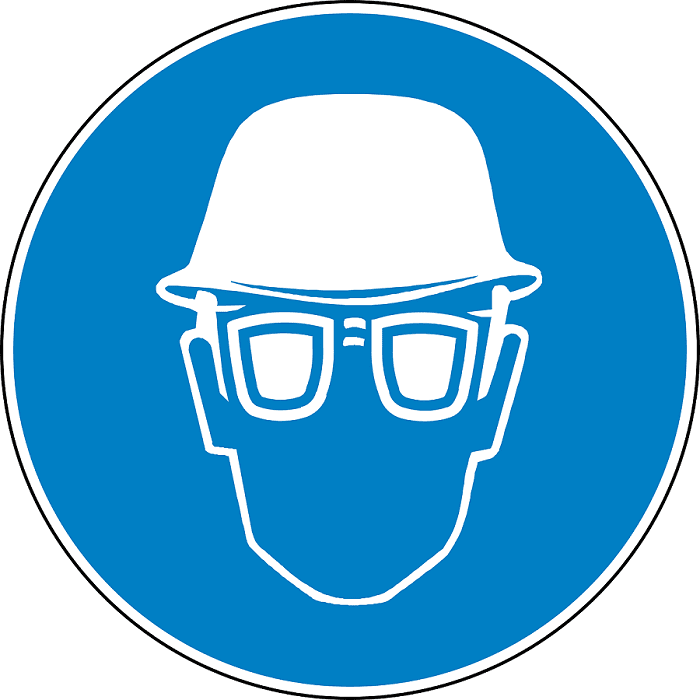The likelihood of encountering a safety professional that possesses at least one pet peeve is relatively high. The prevailing reason is that we promoters of workplace safety take our jobs personally. While going to great lengths to coach and mentor, we strive to educate, so the decision to comply is birthed from revelation and understanding instead of policy.
With ten years of experience in the oil and gas safety game, nothing more frustrates me than being a repeat offender for safety glasses. I am not referring to the individual who forgets they are stowed in the shirt pocket or mistakenly left in the truck. We all make mistakes, and even I have left my pair sitting on the dashboard while I made my way across a location.
The perpetual breakers of favorable culture deal equal amounts of disappointment to accompany the frustration. As a safety professional, personal safety is not exclusive to one personality or employee group. As a result, the same effort is exhibited in educating those who fail to comply.
So, the question begs for an answer. Why do so many despise wearing safety glasses in the workplace? Why is so much effort exerted in avoiding their use? A variety of reasons surface, but the consequence is the same.
Obstructed Vision
Many say they cannot see through the safety glasses because they fog up or sweat covers the lenses during those stifling summer months. Anyone responsible for promoting safety in the workplace understands that safety glasses can be removed intermittently to be cleaned to improve vision.
Products are available online and can be applied to lenses to help prevent them from fogging up. If you need to wipe lenses clean from sweat, the chances are the wearer’s brow could use a wipe as well, and maybe the application of a cold towel. The critical point here is that safety glasses do not need to be permanently affixed to the face and removing them for cleaning purposes is perfectly acceptable. Breaks can be taken to provide relief. Of course, they need to be put back on before re-engaging in the job task.
I have lost count on how often employees have countered the suggestion to wear safety glasses with the comment that they are scratched and impact clear vision. The solution is elementary in the fact that a new pair is easily accessible. Procure a new pair. The employer supplies safety glasses, so they should be readily available. Of course, personal responsibility should prevail. Employees should not be irresponsible and lose possession of safety glasses continually. There is no need to take advantage of the company and its commitment to supplying personal protective equipment like safety glasses.
Uncomfortable Fit
While some excuses find no sympathy with me, a poor fit does. Nothing is more uncomfortable than a pair of ill-fitting safety glasses crushing the bridge of the nose or digging into the back of the ears. The good news is that proactive action can change the current course.
Companies can solicit workforce opinions when purchasing safety glasses. I witnessed an oilfield service company request various samples from various manufacturers of safety glasses. A sampling of the workforce was asked to participate and try on each pair, and employee opinion was recorded on each sample by each employee that participated.
The safety glasses that received the highest marks were purchased as the new models used throughout the company. The process yielded the results that the company was seeking. A complete turnaround was witnessed, with employees now wearing their safety glasses as needed. This is just another example of how creative thinking with a proactive spirit can catapult a safety culture in the right direction.
Statistical Motivation
Short of begging, I find only one tool effective in remediating the non-compliance in safety glasses use. A dose of reality and statistics typically curve poor attitudes. When the reality sets in and correlates to not seeing a son catch the winning touchdown or a daughter performing her first ballot solo, compliance almost always sees a change in course.
The United States feels 2.4 million eye injuries over a year. An estimated 90-percent of those injuries could have been prevented using protective eyewear. Almost 35-percent of all eye injuries occur in the 18 to 45 age group.
The staggering reality reveals that over 2,000 people experience eye injuries each day in the workplace. Permanent vision loss is found in 10 to 20-percent of those incidents. Intrusion into the eyes of foreign bodies accounts for 35-percent of the injuries, while open wounds and contusions cause 25-percent. The remaining injuries come from burns.
Using these statistics in a coaching situation can provide the flip of the proverbial light switch. The workforce understands the glory in the touchdown catch and the beauty in a solo. Using those cherished moments to your advantage can make the difference in preventing an eye injury.
It takes a blitz of any tools to change the attitude of non-compliance effectively. Companies should be proactive and supply a brand of safety glasses that are well received. Safety professionals can carry and hand out wipes to remove dirt, sweat, and fog and pass them out regularly. It takes no effort to bring an extra pair of safety glasses still in their protective wrapper and pass them out to the employee who says his or hers are scratched. Lastly, using statistics and applying them to personal life can serve as the most significant catalyst in changing attitudes and preventing injury.
Nick Vaccaro is a freelance writer and photographer. In addition to providing technical writing services, he is an HSE consultant in the oil and gas industry with twelve years of experience. Vaccaro also contributes to SHALE Oil and Gas Business Magazine, American Oil and Gas Investor, Oil and Gas Investor, Energies Magazine and Louisiana Sportsman Magazine. He has a BA in photojournalism from Loyola University and resides in the New Orleans area. Vaccaro can be reached at 985-966-0957 or nav@vaccarogroupllc.com.
Oil and gas operations are commonly found in remote locations far from company headquarters. Now, it's possible to monitor pump operations, collate and analyze seismic data, and track employees around the world from almost anywhere. Whether employees are in the office or in the field, the internet and related applications enable a greater multidirectional flow of information – and control – than ever before.










